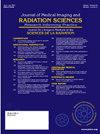Perceptions of radiographers on reporting chest images at Public Hospitals in Malawi
IF 1.3
Q3 RADIOLOGY, NUCLEAR MEDICINE & MEDICAL IMAGING
Journal of Medical Imaging and Radiation Sciences
Pub Date : 2024-10-19
DOI:10.1016/j.jmir.2024.101764
引用次数: 0
Abstract
Introduction
Malawi health facilities' major challenge is inequalities in access to reporting services due to a shortage of radiologists to report on radiographic images. Radiographers in the developed world acquire formal training in image reporting, however, there is no postgraduate training programme in Malawi. Thus, there is a need to explore radiographers' perceptions of reporting chest images in Malawi's hospitals. The study aims to explore radiographers’ perceptions of being tasked with the responsibility of reporting on chest images at public hospitals in Malawi.
Method
The study was conducted through a quantitative cross-sectional design. Data was collected using a self-developed questionnaire. Data collected was analyzed with the assistance of a statistician using the Statistical Package for Social Scientists (SPSS) version 29. The measurement scales and questions included quantitative 10-point Likert. Statistical analysis used the Mann -Whitney U test.
Results
Seventy-one (71) radiographers representing 81 % of the total population from five public hospitals participated in the study. The results from this study found that most radiographers (97.2 %) agreed that radiographers needed to report on chest images in the department. Findings demonstrated that the majority of radiographers (80.3 %) supported ongoing professional development, and of the radiographers (78.9 %) also agreed that reporting on chest images required post-graduate training. Overall confidence in reporting chest images was 81.6 % with no difference by years worked as a qualified radiographer (p=0.196) with the less than 10 years were as confident to report chest images as 10 years or more . Confidence in detecting abnormality on chest images (78.8 %) demonstrated no variation by years worked as qualified radiographer (p=0. 196) or level in department (junior of senior radiographer (p =0.323). Perceived impact of radiographer's involvement in chest image reporting to improved cost effective service delivery, work efficiently, and potential impact on patient care and safety.
Conclusion
Based on the findings of this study, there were positive perceptions among the majority of radiographers about the reporting of chest images in Malawi. It was recommended that policymakers change Malawi's health care policy, especially the radiological sector to allow radiographers to report on chest images.
马拉维公立医院放射技师对报告胸部图像的看法。
导言:马拉维医疗机构面临的主要挑战是,由于缺乏放射科医生来报告放射图像,因此在获得报告服务方面存在不平等现象。发达国家的放射技师都接受过正规的图像报告培训,但马拉维却没有研究生培训计划。因此,有必要探讨放射技师对马拉维医院报告胸部图像的看法。本研究旨在探讨放射技师对马拉维公立医院负责报告胸部图像的看法:研究采用定量横截面设计。数据收集采用自行编制的调查问卷。在统计学家的协助下,使用社会科学家统计软件包 (SPSS) 29 版对收集到的数据进行了分析。测量量表和问题包括 10 点李克特定量。统计分析采用 Mann -Whitney U 检验:五家公立医院的 71 名放射技师参与了研究,占总人数的 81%。研究结果发现,大多数放射技师(97.2%)都认为放射技师需要在科室内报告胸部图像。研究结果表明,大多数放射技师(80.3%)支持持续的专业发展,其中 78.9% 的放射技师还同意报告胸部图像需要研究生培训。对报告胸部图像的总体信心为 81.6%,与作为合格放射技师的工作年限无关(P=0.196),工作年限少于 10 年的放射技师与工作年限在 10 年或以上的放射技师对报告胸部图像的信心相同。在胸部图像上发现异常的信心(78.8%)不因放射技师的工作年限(p=0.196)或在部门中的级别(初级或高级放射技师(p =0.323))而有差异。认为放射技师参与胸部图像报告对提高服务成本效益、工作效率以及对患者护理和安全的潜在影响:根据这项研究的结果,马拉维大多数放射技师对胸部图像报告持积极看法。建议决策者改变马拉维的医疗政策,尤其是放射部门的政策,允许放射技师报告胸部图像。
本文章由计算机程序翻译,如有差异,请以英文原文为准。
求助全文
约1分钟内获得全文
求助全文
来源期刊

Journal of Medical Imaging and Radiation Sciences
RADIOLOGY, NUCLEAR MEDICINE & MEDICAL IMAGING-
CiteScore
2.30
自引率
11.10%
发文量
231
审稿时长
53 days
期刊介绍:
Journal of Medical Imaging and Radiation Sciences is the official peer-reviewed journal of the Canadian Association of Medical Radiation Technologists. This journal is published four times a year and is circulated to approximately 11,000 medical radiation technologists, libraries and radiology departments throughout Canada, the United States and overseas. The Journal publishes articles on recent research, new technology and techniques, professional practices, technologists viewpoints as well as relevant book reviews.
 求助内容:
求助内容: 应助结果提醒方式:
应助结果提醒方式:


